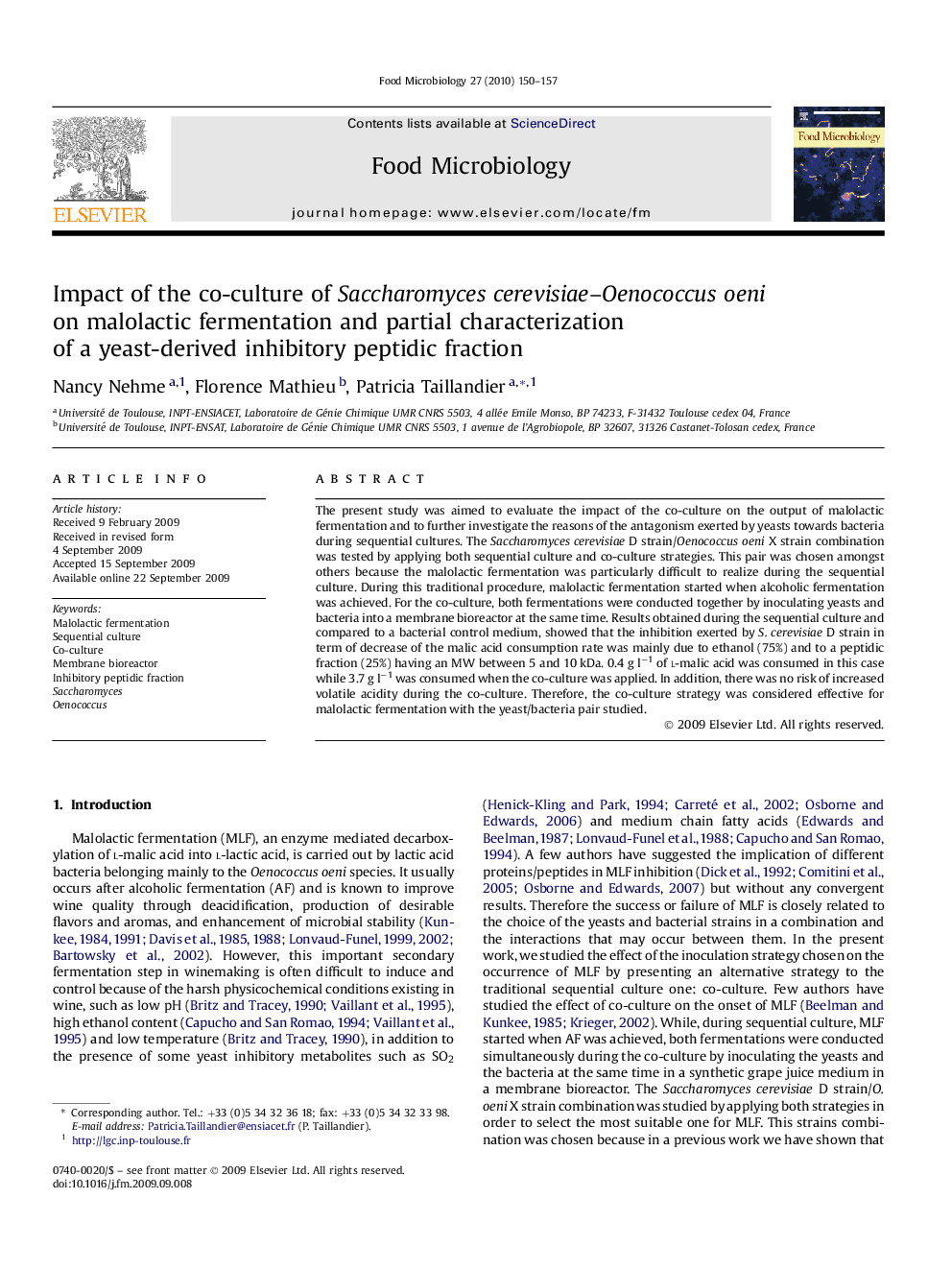| کد مقاله | کد نشریه | سال انتشار | مقاله انگلیسی | نسخه تمام متن |
|---|---|---|---|---|
| 4363458 | 1301557 | 2010 | 8 صفحه PDF | دانلود رایگان |
عنوان انگلیسی مقاله ISI
Impact of the co-culture of Saccharomyces cerevisiae-Oenococcus oeni on malolactic fermentation and partial characterization of a yeast-derived inhibitory peptidic fraction
دانلود مقاله + سفارش ترجمه
دانلود مقاله ISI انگلیسی
رایگان برای ایرانیان
کلمات کلیدی
موضوعات مرتبط
علوم زیستی و بیوفناوری
علوم کشاورزی و بیولوژیک
دانش تغذیه
پیش نمایش صفحه اول مقاله

چکیده انگلیسی
The present study was aimed to evaluate the impact of the co-culture on the output of malolactic fermentation and to further investigate the reasons of the antagonism exerted by yeasts towards bacteria during sequential cultures. The Saccharomyces cerevisiae D strain/Oenococcus oeni X strain combination was tested by applying both sequential culture and co-culture strategies. This pair was chosen amongst others because the malolactic fermentation was particularly difficult to realize during the sequential culture. During this traditional procedure, malolactic fermentation started when alcoholic fermentation was achieved. For the co-culture, both fermentations were conducted together by inoculating yeasts and bacteria into a membrane bioreactor at the same time. Results obtained during the sequential culture and compared to a bacterial control medium, showed that the inhibition exerted by S. cerevisiae D strain in term of decrease of the malic acid consumption rate was mainly due to ethanol (75%) and to a peptidic fraction (25%) having an MW between 5 and 10 kDa. 0.4 g lâ1 of l-malic acid was consumed in this case while 3.7 g lâ1 was consumed when the co-culture was applied. In addition, there was no risk of increased volatile acidity during the co-culture. Therefore, the co-culture strategy was considered effective for malolactic fermentation with the yeast/bacteria pair studied.
ناشر
Database: Elsevier - ScienceDirect (ساینس دایرکت)
Journal: Food Microbiology - Volume 27, Issue 1, February 2010, Pages 150-157
Journal: Food Microbiology - Volume 27, Issue 1, February 2010, Pages 150-157
نویسندگان
Nancy Nehme, Florence Mathieu, Patricia Taillandier,